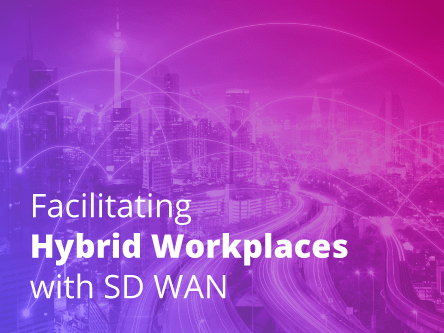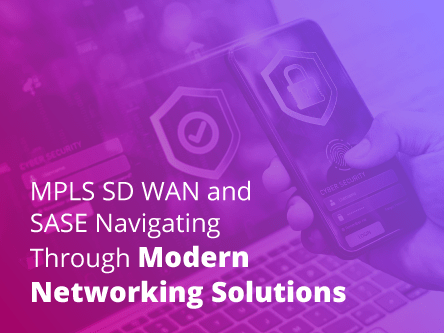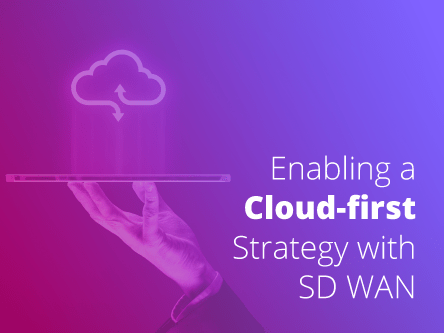SD WAN vs VPN: What’s Best for Your Operations?
In the past three years, businesses, both big and small, have accelerated their digital transformation to accommodate the need for remote and hybrid work setups. These work arrangements, initially implemented to sustain business operations during the pandemic, have now become flexible work models that companies leverage to attract and retain top talent.
Based on the Cisco Global Hybrid Work Study 2022 report which surveyed 28,025 full-time employees across 27 countries, the hybrid work model has proven to be beneficial for employees, in terms of both well-being and productivity. Additionally, organisations have shifted to the cloud to support their distributed workforce and address business continuity and agility demands, especially during the height of the pandemic. The Fourth Quarter 2022 Google Cloud Brand Pulse Survey found that 41.4% of global tech and business leaders expressed their intent to increase investments in cloud-based services and products to build business resilience.
In order to effectively support remote and hybrid workers, optimise usage of cloud applications, and meet the modern demands of security and scalability, organisations must prioritise strengthening their network capabilities. This can be achieved through the implementation of technologies such as software-defined wide area network (SD WAN) and virtual private networks (VPNs).
To determine the most suitable internet-based network technology for your organisation, it is important to understand the advantages and disadvantages of SD WAN and VPNs.
What is SD WAN and What is it for?
SD WAN is a technology that provides optimised network routing and enables secure connectivity among geographically decentralised parts of a business, such as its employees and field offices, and an organisation’s wireless network.
How SD WAN Works
With SD WAN, organisations’ distributed business locations and workers can access a secure network via the internet or a cloud-based private network. The SD WAN architecture is created by applying software-defined network (SDN) technologies to WAN connections, which provides organisations with a single-pane-of-glass view over network control and application-specific traffic management. These WAN connections, which can be either private or public, include internet broadband, fibre, ethernet, wireless or LTE, and Multi-protocol Label Switching (MPLS).
SD WAN Use Cases
SD WAN has many use cases, including enabling organisations to have traffic visibility, network accessibility, and network security. SD WAN is being used in various industries, including healthcare, manufacturing, and financial services. While it is easier to see how big enterprises with global offices and employees can benefit from using SD WAN, even small and medium-sized businesses (SMBs) who have multiple offices can utilise this technology to work with multiple WAN types, including LTE and 5G.
SD WAN Adoption
SD WAN adoption has been steadily growing since 2020. According to a report by TeleGeography, as of 2023, 47% of survey respondents have already installed SD WAN, while 86% of their respondents are in some stage of adopting it in their organisations. Meanwhile, research company Omdia forecasts that SD WAN adoption will reach US$6.4 billion by 2025.
What is VPN and What is it for?
A Virtual Private Network (VPN) is an internet-based service that hides your IP address on a public network and encrypts your data, ensuring a secure online experience.
How VPN Works
A VPN establishes a private network connection between your computer and a VPN server. With a VPN, your web requests still pass through your internet service provider (ISP). However, your online information travels through an encrypted tunnel, keeping it hidden from third-party sites. This means that instead of revealing your IP address, the website you access through a VPN only sees the address of the VPN server.
VPN Use Cases
There are a plethora of reasons why individual consumers use VPNs. With VPNs, users can enjoy region-restricted content on streaming services. They can also securely access sites and services using public Wi-Fi, as VPNs can protect users from inadvertently divulging sensitive information when using public connections and certain applications and services. Organisations, on the other hand, use VPNs to enable a number of their employees to access the company network remotely.
VPN Adoption
VPNs have been popular even before the pandemic. Organisations worldwide increased their VPN capacities by 76% in 2021.
Both SD WAN and VPNs both provide connectivity and secure access to users. SD WAN optimises traffic over multiple connections, while a VPN enables point-to-point connectivity between a machine and a network, sending traffic over a single network.
The Pros and Cons of Using SD WAN
The Benefits of SD WAN
- It simplifies network provisioning and operational support. SD WAN enables organisations to allocate their IT resources to other business-critical activities.
- It improves application and network performance. Organisations can utilise SD WAN to effectively allocate bandwidth and prioritise traffic for mission-critical applications and services.
- It’s an intelligent network traffic solution. SD WAN increases availability and scalability through failover and redundancy mechanisms.
- It helps enhance security. To combat evolving cyberthreats and risks, most SD WAN services provide basic and advanced security features, including firewall, VPN services, encryption, and intrusion prevention systems (IPS).
- It provides centralised network control and visibility. SD WAN allows organisations to have visibility and control over their network, enabling quick troubleshooting and security issue resolution.
- It reduces your reliance on Multi-protocol Label Switching (MPLS). Despite being a good connectivity option, MPLS can be expensive and difficult to deploy. With SD WAN, organisations can decrease their dependency on MPLS and limit its usage to scenarios where lower latency and higher quality of service are required, particularly for latency-sensitive applications such as voice and video communications.
- It improves productivity and user experience. SD WAN allows organisations to enhance their network infrastructure, scale existing services, and reduce the risk of network outages.
- It offers flexibility and speed. SD WAN provides dynamic network traffic capabilities and improves overall network performance.
The Drawbacks of SD WAN
- Organisations may run into underlay provisioning difficulties. Organisations’ internal IT teams may have to contend with underlay provisioning challenges, which can be best handled by managed SD WAN services.
- It may add network complexity. Organisations need to ensure that their existing network infrastructure and security policies can properly and securely accommodate their SD WAN configurations.
- Organisations’ in-house IT teams may run into training and expertise challenges. Organisations’ in-house IT teams may lack the technical know-how needed to deploy and manage specific SD WAN features. To counter potential skills gap within their in-house IT teams, organisations can leverage the expertise provided by managed SD WAN services for migration, configuration, and deployment.
The Pros and Cons of Using a VPN Service
The Benefits of VPN
- It enables you to scale your network. A VPN provides secure connectivity for remote and hybrid workers, especially when connecting to public Wi-Fi networks.
- It prevents data or bandwidth throttling. By using a VPN service, you can bypass intentional bandwidth limitations imposed by your ISP for specific websites.
- It is affordable. VPN services are cost-effective for individual users and SMBs, typically costing around US$10 per user.
The Drawbacks of VPN
- It has slow connection speeds and unstable service. When VPNs encrypt your data and route your internet traffic through a secure server, it can lead to decreased internet speeds, at times by as much as 50%.
- It requires enterprises to grant access to third-party services. Organisations may have concerns about giving third-party access to their corporate network when using VPNs. According to Statista, 26% of their respondents identified this as their biggest VPN-related challenge.
- It lacks visibility. When using VPNs, IT departments may not have visibility into the network connections of their users, making it difficult to monitor and troubleshoot issues effectively.
- It can increase the attack surface. VPN vulnerabilities can be exploited by malicious actors to gain unauthorised access to corporate networks.
Can SD WAN replace VPN?
Today’s modern workforce is embracing decentralisation and agility, pushing organisations to reinforce their network connectivity solutions to keep up with ever-changing needs.
Individual users and SMBs with less complex WAN needs can benefit from the affordability and encryption capabilities of VPN services. However, VPNs may not always provide continuous connectivity for businesses with large-scale and highly distributed operations.
Larger organisations with geographically distributed workers can benefit from the network connectivity flexibility, visibility, and reliability of SD WAN deployments. With SD WAN, organisations can have granular policy enforcement across the entire environment, resulting in more robust security measures.
Ultimately, the unique demands of your business continuity and flexibility will determine whether SD WAN can replace VPNs in your organisation. As work setups progressively become hybrid, your organisation may benefit from a hybrid approach to network connectivity and security by utilising both SD WAN and VPN.
Get in touch today to learn how Epsilon’s global SD WAN solutions can help your organisation save costs and improve productivity with improved application performance.







